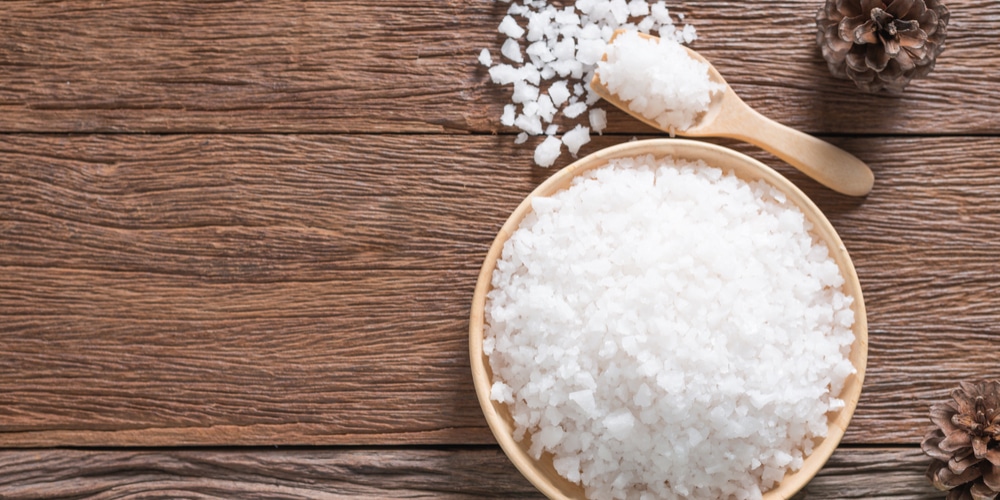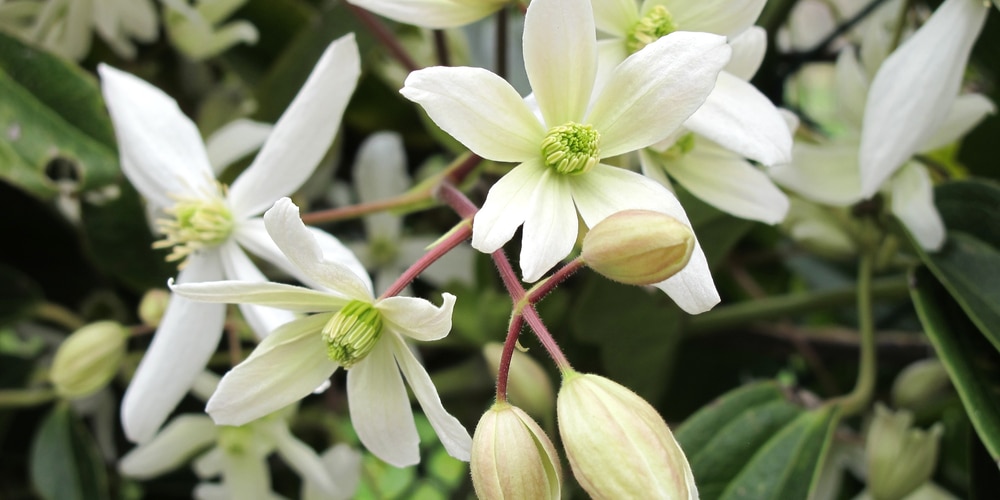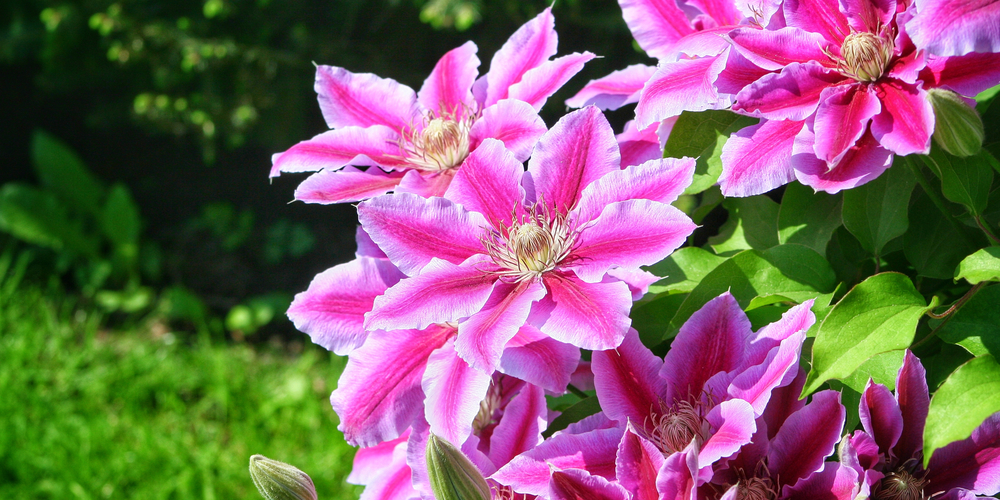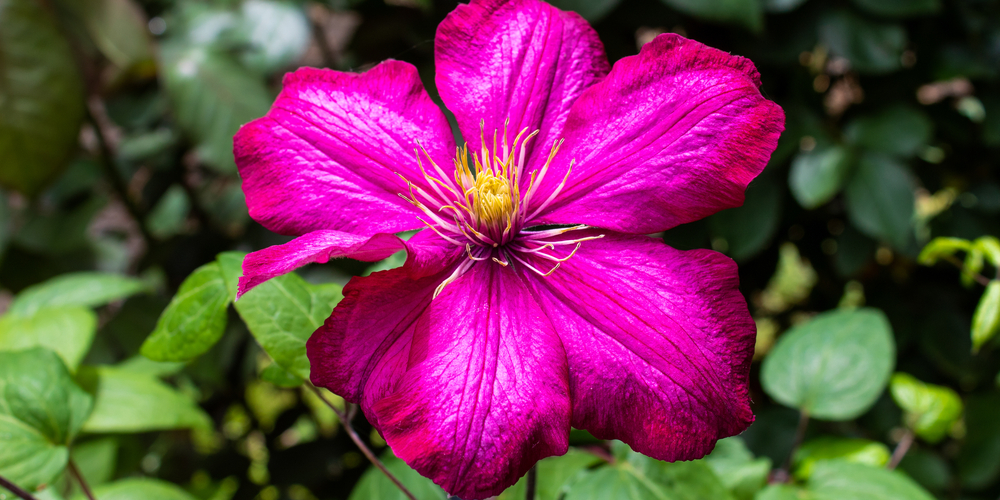If you’re new to gardening and have heard of Epsom salts being used in gardening but you’re not quite sure why, how, or when it is appropriate to do so, trust us, you’re not the only one. Is Epsom salts good for clematis?
You might have heard Epsom salts being discussed with regard to clematis plants too, but again, you might not be sure if it’s a good thing to use Epsom salts with clematis or not. And hey, it isn’t just you newbies either, even the gardening gurus struggle with this sometimes. So today we’re going to look at Epsom salts more generally, before answering your burning question: Is Epsom salts good for clematis?
What Are Epsom Salts?
Epsom salts are a mineral compound made up of magnesium, sulfate, and oxygen – for those who don’t know (and those who need a reminder). They’re also called magnesium sulfate. They’re used for a lot of different reasons, but one way they’re used, which is most relevant to us here today, is in gardening.
How Do Epsom Salts Help Plants?
The reason Epsom salts are used quite a lot in gardening is because plants actually need magnesium and sulfur to grow, and soil very often lacks these qualities, especially if a plant has been using up all the soil’s magnesium and sulfur reserves if it’s been growing in the same spot for a few years. By using Epsom salts with certain plants, you can replenish the sulfur and magnesium it needs, and help it to grow.
Here are some of the benefits you can expect to see when using Epsom salts with certain plants:
- Improved flower blooming
- More lush, deep greens
- Supported plant growth
- Supported healthier growth
Is Epsom Salts Good For Clematis?
Is Epsom salts good for clematis? Hopefully, the above sections have cleared up what Epsom salts are and why they can benefit some plants. Now let’s take a closer look at whether Epsom salts are good for clematis?
Well, yes, they are great for clematis plants! All the benefits you see above can be applied to a clematis, too. Epsom salts will help with magnesium deficiency specifically for clematis plants (which can be quite prone to magnesium deficiency problems) by replenishing the magnesium supply it needs.
You can then expect to see your clematis with bigger, brighter, healthier flowers and improved, healthier growth thanks to the Epsom salts. But then that begs the question – when should you use Epsom salts for clematis plants?
Do You Need To Use Epsom Salts With Clematis All The Time?
Actually overusing Epsom salts with your clematis won’t help in any way. Your clematis plant will only take as much magnesium and sulfur from the soil as it needs, so if you’re using it constantly, then that’s just a waste of Epsom salts.
Instead, only use it when you need to. How do you know when your clematis needs Epsom salts? Well, that’s easy enough to determine.
One surefire sign that your clematis is deficient in magnesium is yellowing or browning leaves that look unhealthy. If the flowers are discolored compared to how they usually look, and if the plant generally is looking unhealthy, then Epsom salts can be used to correct it. You might also notice that your clematis isn’t growing at as healthy a rate as it once was, and this can be a sign that it needs more magnesium, which Epsom salts can provide.
Basically, if your clematis is looking stunted, unhealthy, or less colorful – then bring out the Epsom salts as an almost reviving tonic to get it back on track. If your clematis is healthy and growing well, then you don’t need to use Epsom salts at all. So just monitor the health of your clematis to determine what’s best for it.
How To Use Epsom Salts With Clematis
You might be wondering how you administer the Epsom salts to your clematis if it isn’t looking as healthy as it should, but thankfully the process couldn’t be simpler.
Just mix around 1 tablespoon of Epsom salts with 5 liters of water in a watering can and mix them up well. And then just water your clematis like normal, being careful not to soak the soil too much, but pouring enough at the base of the plant to make the soil wet.
It should only take a few days for your clematis to start looking better, and it should start growing and blooming much healthier in the coming weeks. And if it starts to look unhealthy again, just hit it with another Epsom salt mix on the next watering!
Is Epsom salts good for clematis?: Conclusion
As you can see, Epsom salts are great for clematis plants when they’re not looking great. If they’re healthy and growing happily, then you won’t need to use Epsom salts. Just monitor your clematis, and use Epsom salts when necessary to give it that extra boost it needs to grow healthy and happy!
Related Article: Does Epsom Salts Kill Grass?




